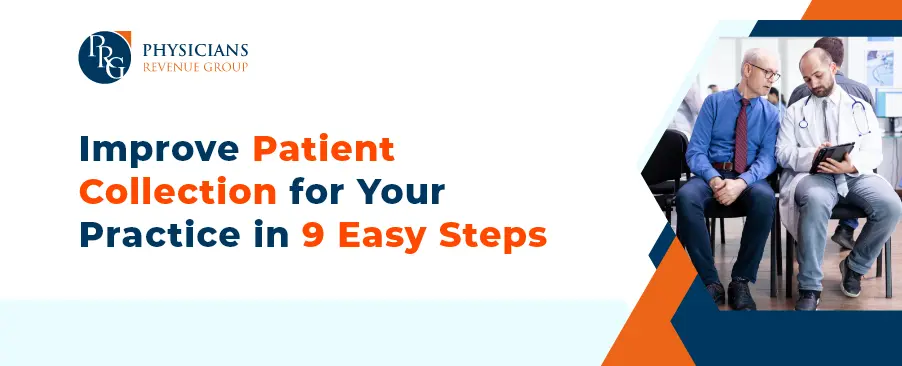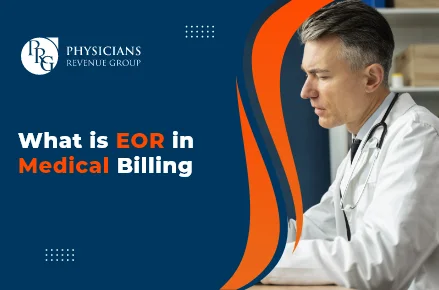
Email: info@prgmd.com | Call: +1 (630) 242-6474
Business hours: 9:00 to 5:00 | Monday to Friday
Email: info@prgmd.com | Call: +1 (630) 242-6474
Business hours: 9:00 to 5:00 | Monday to Friday

Table of Contents
ToggleWhy is improving patient collection necessary for your practice?
To answer your question, let’s elaborate on the importance of patient collections in healthcare revenue cycle management. Increasing patient collections is one of the key components of effective RCM. Medical payments have drastically changed post the pandemic and are increasingly affected by the ever-increasing care costs. However, this doesn’t end here; the burden of bill payments still falls on the patients. Therefore, healthcare providers must adjust their collections to reflect the new demands of the industry accurately – all the more so to avoid cash flow target issues.
What’s interesting here is that patient copays make up close to 20% of a doctor’s office revenue. However, most practices can only collect just 60% of patient copays. Such a fall in patient collection rate, with the expansive demands of changing ICD codes and updates, can become a problem for your practice’s revenue recovery. Therefore, improving your patient payment collection process must be the top priority in your healthcare financial plan.
One strategy involves increasing transactions at the point of service (POS) collection. Utilizing the moment when the patient is physically present is ideal. The front desk or check-in staff should actively communicate any outstanding balances and previous collection attempts to the patient.
This approach ensures that patient balances are addressed quickly, allowing billing departments to boost revenue from collections. Moreover, it minimizes the need for prolonged efforts in pursuing unpaid bills and issuing statements.
Provide adequate training to your billing staff on efficient payment posting practices. Familiarize them with the latest tools and technologies to maximize effectiveness.
Implementing these measures will expedite the payment posting process and contribute to a more efficient and error-free patient collection workflow in your healthcare practice.
In addition to the phone calls, dispatch a well-crafted written reminder to the patient’s home or email address. Ensure the communication is transparent and empathetic and includes complete information on available payment methods.
Persistence and empathy are key during follow-ups, particularly when patients encounter financial difficulties. Collaborate with patients to find mutually beneficial solutions, effectively creating a positive approach to resolving overdue patient collections.
Consider outsourcing to enhance the efficiency of your medical billing collection process. Outsourcing third-party billing providers brings expertise to implement effective strategies, ensuring a steady cash flow and quick collection. They specialize in patient follow-ups for overdue accounts and assist with denied claims. The advantages of outsourcing patient collections include:
Patients are now seeking convenient ways to settle bills without visiting hospitals. Virtual payment portals offer the comfort of debt clearance from home. A 2021 survey shows over 80% of customers preferred contactless payment options.
Today, customers can effortlessly tap credit or debit cards onto POS devices for payments. Setting transaction limits adds an extra layer of security against unauthorized withdrawals.
Implementing self-pay collection practices reduces accounts receivable days and overall improvement in the collection process.
Share:
Categories
Recently Added

What is an ABN in medical billing?

What does a Clearinghouse do During Claims Submission?

What is EOR in Medical Billing?
We Would Love to Assist You!
We treat your data confidentially and don’t share any information with a third party.